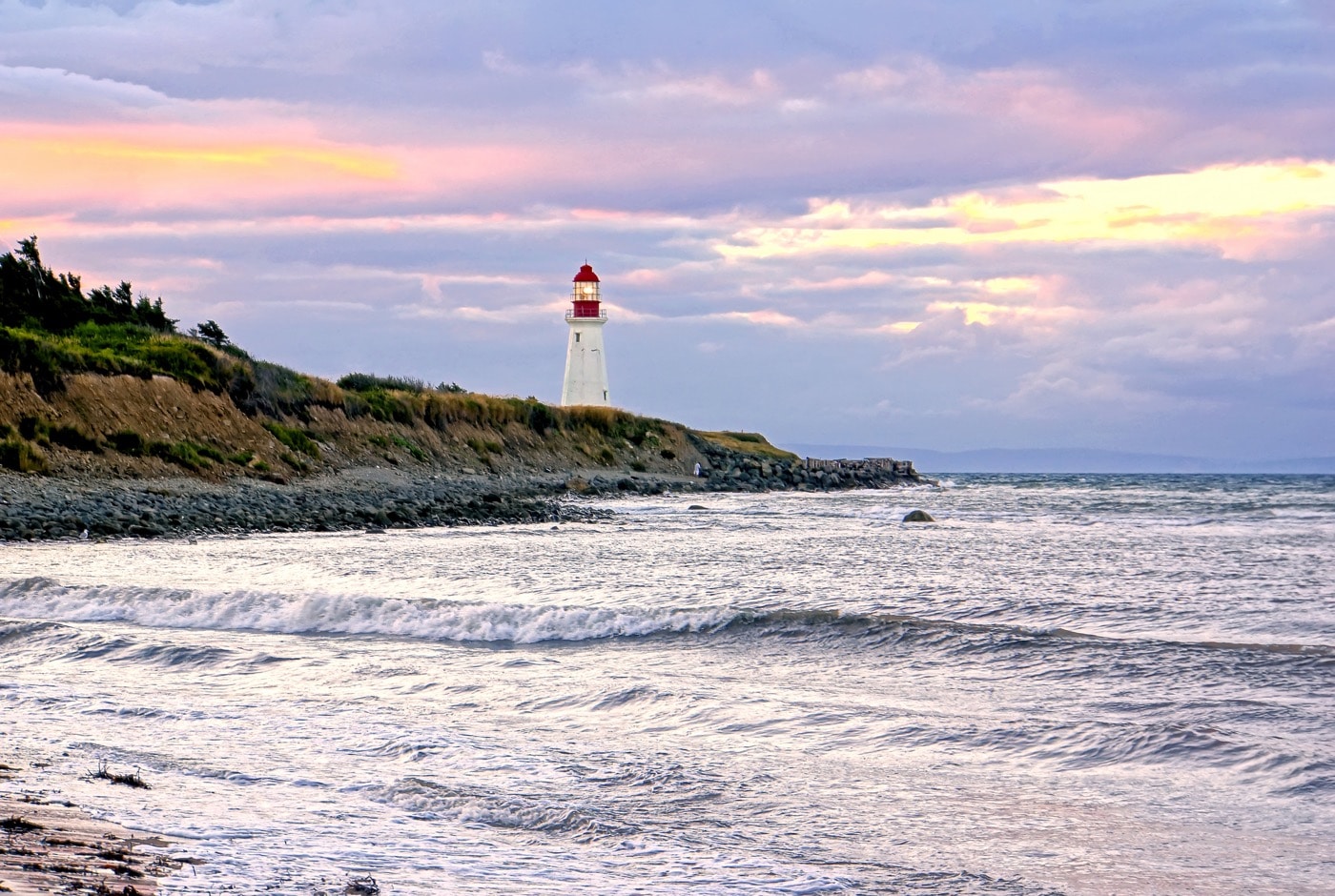The first time I visited Nova Scotia, I stayed three weeks, the longest I’ve ever stayed in one place in all my travels. It wasn’t just the natural splendor of this Canadian maritime province—an idyllic landscape of wide sandy beaches, towering bluffs, lush forests, and rolling green meadows lapped by the Atlantic. Nor was it the kayaking and canoeing, or the wildlife seen on woodland walks and on whale and puffin watching excursions. It wasn’t Nova Scotia’s attractions that held my interest either, though there are countless historic sites, from Port Royal where French explorer Samuel de Champlain set down roots to the Alexander Graham Bell Historic Site where the inventor spent his summers.
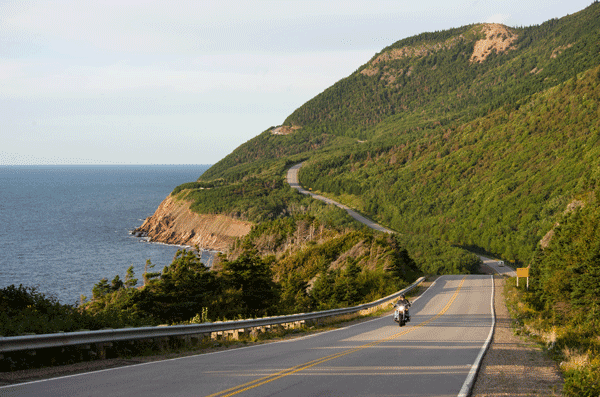
Nor was I captivated by the cultural diversity—the fascinating heritage of native Mi’kmaq Indians, as well as French Acadians and Scots—experienced through music festivals, at events like the Antigonish Highland Games (the longest continually held games outside Scotland), and at outdoor living history museums complete with shaggy Highland cows and working blacksmiths.
It wasn’t even the cuisine that captured my heart, though this sea-girt province is the place for fresh caught lobster, scallops and other seafood as well as hearty Scottish and French Acadian fare. And it wasn’t the many well-run accommodations – B &B inns in farmhouses and Victorian mansions, woodsy cabins and backyard cottages, some of North America’s most pristine campgrounds, and sprawling oceanfront resorts offering every outdoor activity known to man.
There was no single thing that kept me in Nova Scotia. Rather, it was all these things rolled into one ineffably beautiful destination, filled with lots of friendly Canadians, right outside my North American front door. But you don’t need three weeks to savor Nova Scotia’s charms. In a week or 10 days, you can see its highlights, and also find time to kick back and relax. There are short flights to Halifax, the capital, from Boston (1 hour and 20 minutes) and New York (about 2 hours) on Air Canada, Delta, United and US Air.
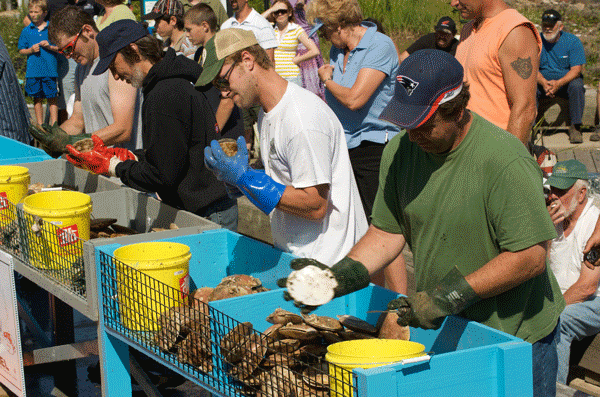
Flying to Nova Scotia is fine. But this maritime province – a large peninsula, one small island and several smaller islands – cries out for a sea arrival. Cruise lines call regularly at Yarmouth at the island’s southern tip. But, perhaps to really experience the best of this destination, you should hop in a car and set out on a road trip through New England to the province of New Brunswick and the town of St. John, 8 hours by car from Boston and 12 from New York. Then catch the M/V Princess of Acadia car ferry for the three hour Bay of Fundy crossing. Digby, the ferry terminus, is known for its scallop fishing fleet, and its scallops, celebrated during Digby Scallop Days in July. The town is also a prime place to see the Bay of Fundy tides, the world’s highest, and the tidal bore, a corkscrew of muddy water that curls up from the nearly dry rivers as the tide comes in. You can watch this natural phenomenon from bridges, or take a rafting trip on the bore. Digby has several good hotels too, but if you’re into camping, drive 1 ½ hours inland to Kejimkujik National Park to canoe or kayak the lakes and rivers, swim, hike and bird watch. You may even glimpse a moose or bear.
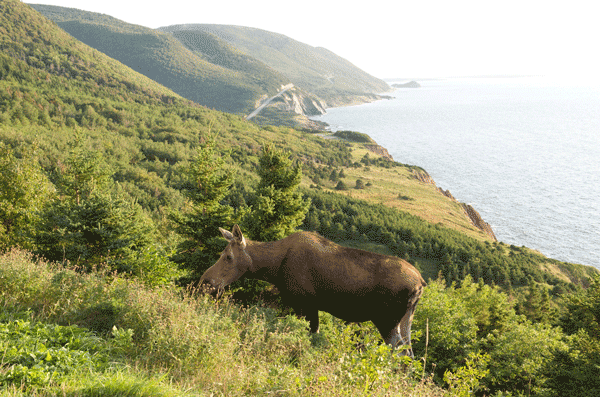
If you set a course eastward from Digby by car, in about 15 minutes you can discover the museum and fortifications at Fort Anne National Historic Site which recall frequent 18thcentury British and French skirmishes on North America’s most contested piece of land. At nearby Port Royal National Historic Site, walk through the reconstructed 17thcentury fort and fur trading post of the French explorer Samuel de Champlain.
About 70 miles further from Fort Anne in the Fundy Bay-Annapolis Valley region is Wolfville, a quaint university town of leafy streets and Victorian mansions that’s steeped in history. Between 1755 and 1763, the British expelled thousands of 17th-century French settlers, known as Acadians, from their homes here. A new visitor center at the Grand Pré National Historic Site, recently awarded UNESCO World Heritage status and the centerpiece of this legendary landscape, along with a church and statue, mark the tragic deportation. While in town, toast those brave souls with fine local wines at Luckett Vineyards and Muir Murray Estate Winery or enjoy fine cuisine at Grand Pré Winery’s acclaimed Le Caveau Restaurant.

The nearby Minas Basin is the site of the highest of high tides, some reaching 54 feet. Wolfville has a number of charming B&B’s for an overnight stay or pitch your tent at Blomidon Provincial Park with spellbinding views of the basin and surrounding red sand beaches. From Wolfville, it’s 111 miles further east, through Truro, to New Glasgow, which faces the Northumberland Strait separating Nova Scotia from Prince Edward Island. The coast here has more than a dozen warm water beaches, more than anywhere else in Atlantic Canada, with some, like Melmerby Beach, boasting water temperatures in the 80’s. Three miles south of there lies Stellarton, home of the Nova Scotia Museum of Industry with 36,000 artifacts from the steel, coal and gold-mining industries. To the north in Pictou at Hector Heritage Quay, a museum and a full-size replica of the ship Hector celebrate Scottish settlers who first landed here in the 18th century. Why not spend an afternoon in the area then head due north to Malagash for tastings at award winning Jost Vineyards.
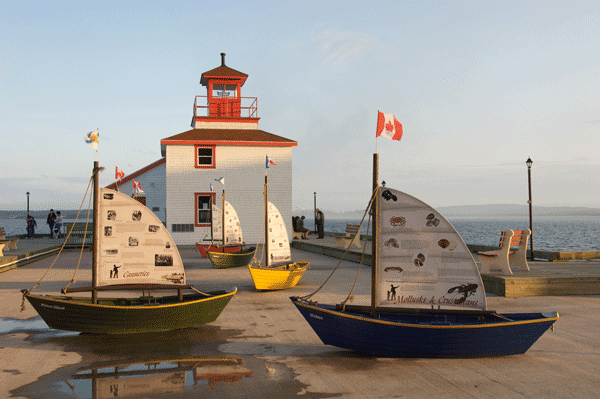
If you continue in the eastward direction about 35 miles, you’ll reach Antigonish, home to an acclaimed summer theater. Close by there to the southeast about 33 miles brings you to the narrow Strait of Canso which divides the Nova Scotia peninsula from Cape Breton Island. You can cross the strait on the Canso Causeway to the southern tip of Cape Breton Island then head 43 miles north to Glenville where you’ll savor smoky single malt whiskeys at the Glenora Inn and Distillery. Then go another 46 miles north to Chéticamp, a historic French town on the famous Cabot Trail, lauded as the most scenic highway in the world. This small fishing community is largely Acadian with a sizeable Francophone enclave and is known for its handcrafted hooked rugs. If you have time, check out the Acadian Museum which gives weaving and rug-hooking demonstrations.
From here the trail winds around the high cliffs of Cape Breton Island’s northeasterly reaches providing magnificent views of Cape Breton Highlands National Park with its cliffs and deep canyons. In Ingonish, a cluster of five small communities nestled between the park and the ocean, hikers thread trails along Cape Smokey’s high bluffs while canoeists and kayakers ply the waters offshore. Spend an afternoon here, and then head south to St. Ann’s Harbour. In nearby Big Bras d’Or and Englishtown, one of the oldest settlements in North America, tour boats take visitors out to the Bird Islands to watch hundreds of colorful little puffins dive for fish. From St. Ann’s, it’s a short drive south to Baddeck and the Alexander Graham Bell National Historic Site overlooking Bras d’Or Lake, ancestral home of the Mi’kmaq Indians and the site of Canada’s largest population of nesting bald eagles. Displays include intriguing inventions like the bullet probe Bell created right after President Garfield was shot.
Continuing south, in Iona, the 43 acre Highland Village Museum is North America’s only living history museum devoted to Gaelic culture. High above the Barra Strait, the site has 11 buildings, including a blacksmith shop, a general store, a church and a carding mill, and is populated by friendly costumed guides and shaggy Highland cows.
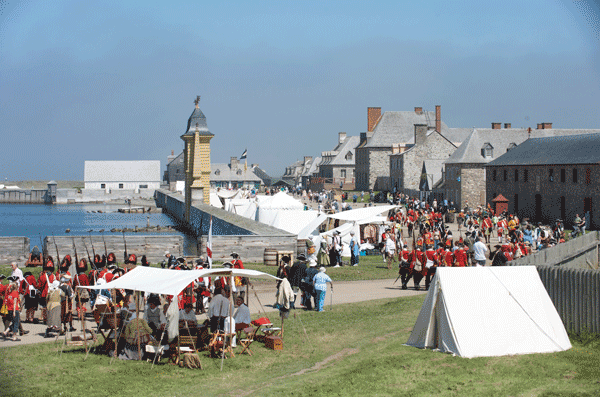
East lies the splendid Fortress of Louisbourg National Historic Site, North America’s largest historic reconstruction. Here scores of costumed interpreters, dressed as fishermen, tradesmen, servants and soldiers enliven an 18th century French fortified town complete with restaurants, gardens, art filled mansions and military installations.
Southwest lies Port Hastings where you can again cross the Canso Strait to return to the mainland. Heading west on the Marine Drive toward Halifax, you wind through a succession of seaside towns. In Sherbrooke, visit Sherbrooke Village, a reconstructed 19th century shipbuilding, lumbering and gold mining town. Further west in Tangier, buy world famous smoked salmon at J. Willy Krauch & Sons. About 40 miles outside Halifax, stroll three-mile-long Martinique Beach, the province’s longest.
Halifax has more than its fair share of in-city attractions, including the Maritime Museum of the Atlantic, with exhibits on Halifax’s key role in recovering Titanic victims, and the star shaped Citadel where you’ll hear the skirl of bagpipes by the kilted 78th Highland Regiment. If you drive 27 miles southwest you can see stunning Atlantic views from Peggy’s Cove, a prime attraction on the Lighthouse Trail scenic drive, where a famous red and white lighthouse, one of the most recognizable in the world, sits atop a massive granite outcropping. Further west along the South Shore, a myriad of attractions like the old fishing village of Lunenburg, another UNESCO World Heritage Site, beckon.
If you can’t tear yourself away from Nova Scotia, don’t worry. It wouldn’t be the first time anyone overstayed their welcome here, would it?
The area code for Nova Scotia is 902.
Where to Stay:
Lord Nelson Hotel & Suites – Across from the Public Gardens, this 1928 landmark has 262 elegant guest rooms and public rooms with crystal chandeliers. 1515 S. Park St., Halifax. 423-6331 or 800-565-2020. www.lordnelsonhotel.com
Digby Pines Golf Resort and Spa – The oceanfront resort includes a 1929 Norman style chateau with 85 rooms, 31 cottages and an 18 hole golf course. 103 Shore Rd., Digby. 245-2511 or 800-667-4637. www.digbypines.ca
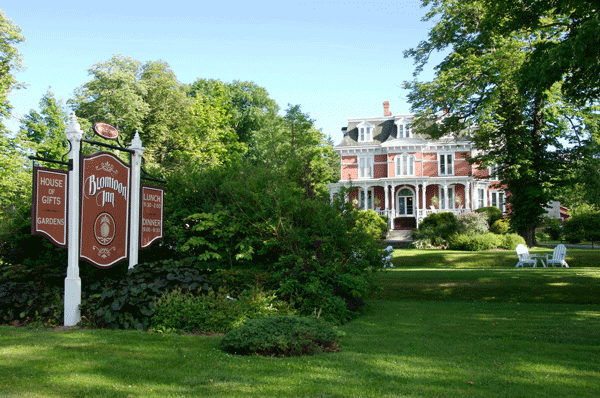
Blomidon Inn – Amid Victorian gardens, this 1882 sea captain’s house has 28 rooms, 4 apartments, a cottage and an acclaimed restaurant. 195 Main St., Wolfville. 542-2291 or 800-565-2291. www.theblomidon.net
Glenora Inn and Distillery – Canada’s only single malt whiskey distillery has a stylish 9 room inn, 6 chalets, and a dining room and pub, only 10 minutes from 18 hole Cabot Links Golf. 13727 Highway 19, Glenville. 258-2662 or 800-839-0491. www.glenoradistillery.com
Keltic Lodge Resort & Spa – Cape Breton Island’s grande dame offers 34 rooms in its signature white lodge with red roofs, a 40 room inn and 11 cottages. Also here: The famed Cape Breton Highlands 18 hole course, three restaurants and an AVEDA spa. 383 Middlehead Peninsula, Ingonish Beach. 285-2880. www.kelticlodge.ca
Liscombe Lodge Resort – There are 68 lodge, cottage and chalet units, a restaurant, a fitness center and a full roster of activities. 2884 Highway 7, Liscombe. 779-2307 or 800-665-6343. www.liscombelodge.ca
Where to Eat:
Tempest World Cuisine – Using fresh sourced ingredients, it’s one of the Maritimes’ healthiest restaurants. 117 Front St., Wolfville. 542-0588 or 866-542-0588. www.tempest.ca
Le Caveau at Grand Pré Winery – Among the world’s top winery restaurants, Le Caveau serves international cuisine using local ingredients. 11611 Highway 1, Grand Pré. 542-7177 or 866-GP-WINES. www.grandprewines.com
The Red Shoe Pub – Owned by the musical Rankin family, this welcoming pub on Cape Breton Island offers fresh local fare and live music nightly. 11573 Route 19, Mabou. 945-2996. www.redshoepub.com
What to See:
Halifax Citadel National Historic Site – Star-shaped 1856 fort with colorful military pageantry by the kilted 78th Highland regiment. 5425 Sackville St., Halifax. 426-5080. www.parkscanada.gc.ca/halifaxcitadel
Grand Pré National Historic Site – Part of a UNESCO World Heritage Site from which British troops deported thousands of French Acadians. 2241 Grand Pré Rd., Grand Pré. 542-3631 or 866-542-3631. www.grand-pre.com
Alexander Graham Bell National Historic Site – Above Bras d’Or Lake, the multimedia museum has displays on the inventor’s life and many creations. Chebucto St. (Hwy 205), Baddeck. 295-2069. www.parkscanadagc.ca/alexandergrahambell
Highland Village Museum – Overlooking the Barra Strait, this living history museum captures the world of 19th-century Scottish immigrants with costumed interpreters, Highland cows, horses and other farm animals. 4119 Hwy 223, Iona. 725-2272 or 866-442-3542. www.highlandvillage.museum.gov.ns.ca
Fortress of Louisbourg National Historic Site – North America’s largest historic reconstruction, this lively 18th century French garrison town has scores of period buildings, including restaurants, and charming costumed interpreters. 733-3552. Louisbourg. www.parkscanada.gc.ca/louisbourg

